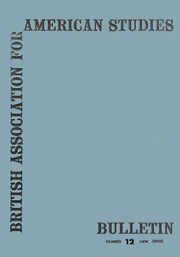No CrossRef data available.
Article contents
Extract
In the thirty years or so which separate James's The Europeans from The Ivory Tower, the transformation of America was accomplished, and the society James knew and wrote about in 1878 was indeed gone forever. What had taken its place he was not really to discover until his return in 1904. It is true that he had dealt in his work with the American millionaire and the ‘rape of Europe’, but the naivete of his conception of what such a figure as Christopher Newman would be like is easily demonstrated by the lives of such men as Frick, Vanderbilt and Jay Gould. These men and their contemporaries: Hill, Harriman, Rockefeller, Carnegie, Duke, Cornell and Morgan - a comparative handful of multimillionaires - had brought into being an industrial power as remote and different in its own way from mid-century New England, as they both were from the Europe James had come to know so well.
- Type
- Research Article
- Information
- Copyright
- Copyright © British Association for American Studies 1962




